“From the moment they were discovered, mountain gorillas have faced poaching, civil wars, deforestation and persistent encroachment on their territory by humans. Populations collapsed, hitting a low of just 254 in 1981, with today’s global population sitting at just 1,063. The mountain gorilla is still very much in danger even though their numbers are slowly increasing because of the collaborative efforts to protect them – and Viva! is part of this.”
Juliet Gellatley, founder of Viva! UK & Viva! Uganda
Shrinking Habitat
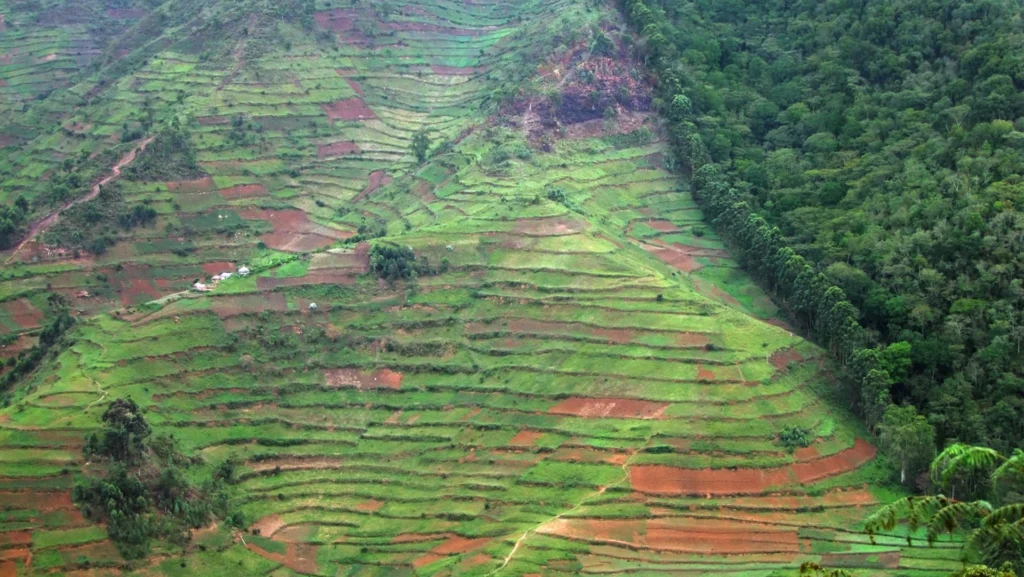
Deforestation is the single biggest threat to the gorillas’ habitat. While deforestation might be slowing down in most parts of the world, this is not the case in Africa and, in Uganda, the last 10 years have seen an alarming rise in deforestation.
In 2001, the country destroyed 115 square miles of forest, but by 2020 Uganda was clearing a shocking 284 square miles of forest in a single year.1https://www.fes.de/en/shaping-a-just-world/article-in-shaping-a-just-world/ugandas-silence-at-cop26-over-growing-deforestation
According to the UN, “an average of 122,000 hectares [471 square miles] of forest area has been lost every year from 1990 to 2015, amounting to a loss of around 63 per cent of the country forest cover in this period.”2https://www.fao.org/3/cb7080en/cb7080en.pdf
If Uganda doesn’t take urgent action, it will lose all its forest in the next 25 years.3https://www.theguardian.com/global-development/2020/jun/29/cooking-up-a-solution-to-ugandas-deforestation-crisis-with-mud-stoves
The impact of animal agriculture
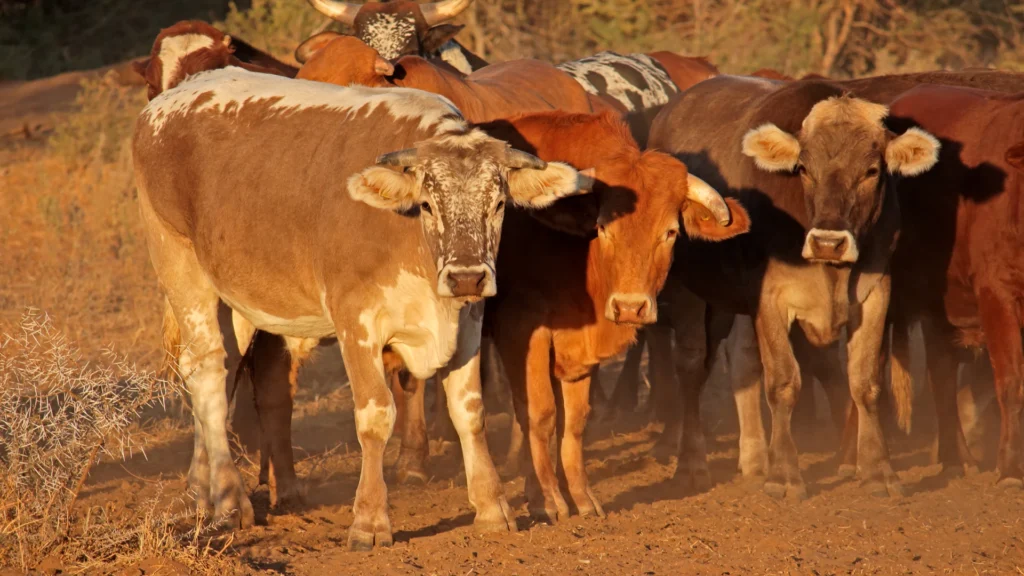
The main driver of deforestation in Uganda is the conversion of forests to agricultural land.4https://www.fao.org/3/CB9360EN/online/src/html/executive-summary.html As a result of Uganda’s population growth, increased urbanisation, and an increased income for wealthier Ugandans, the demand for animal products is predicted to dramatically rise in the coming years. The FAO estimates that by 2050, the demand for meat and milk products in Uganda will more than double and “the production of all types of meat and that of milk will increase by 164 and 41 per cent, respectively.”5https://www.fao.org/3/ca7009en/CA7009EN.pdf
Of course, a growing population needs food, but it would be much more sustainable to meet these needs through the growing of crops instead of farming animals. Animal foods require by far the most land and resources – this is because land is not only used for grazing but also for growing food for the animals. The more animal-based foods we eat, the more endangered Uganda’s forests – and gorillas – become.
However, crops are a far more efficient way to feed the growing population and use less land and other natural resources.
A vegan diet is associated with only half the cropland demand, grazing intensity and overall biomass harvest of meat-based diets6https://www.nature.com/articles/ncomms11382 so switching to a vegan diet would have a phenomenal impact on reducing deforestation and land degradation in Uganda.
Illegal deforestation
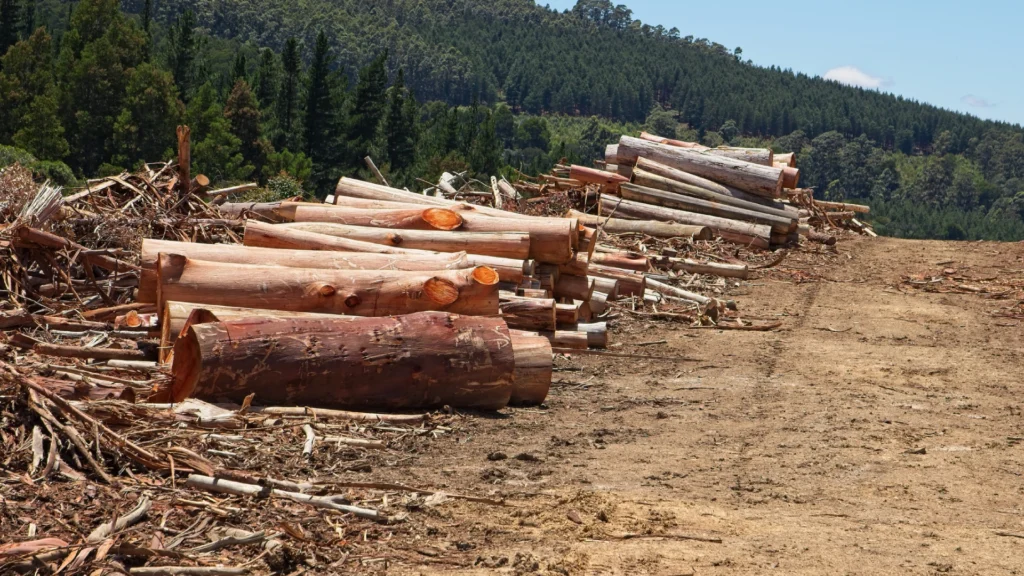
In many places, trees are illegally hacked down, and land is taken over by cattle ranchers farming cows for beef.
A report titled Illicit Harvest, Complicit Goods showed that many farmed products exported worldwide from Latin America, Southeast Asia and Africa are linked to illegal deforestation.7https://www.forest-trends.org/publications/illicit-harvest-complicit-goods/ It found that between 2013 and 2019, a staggering 69 per cent of tropical deforestation for commercial farming was illegal. In Uganda, for example, it is common for cattle ranchers to illegally grab and deforest land from Queen Elizabeth National Park and use it for farming beef cattle.8https://conbio.onlinelibrary.wiley.com/doi/abs/10.1111/cobi.12538?campaign=woletoc Although Bwindi Impenetrable Forest is a protected area, this doesn’t stop smallholder cattle illegally encroaching on the land.
Human encroachment
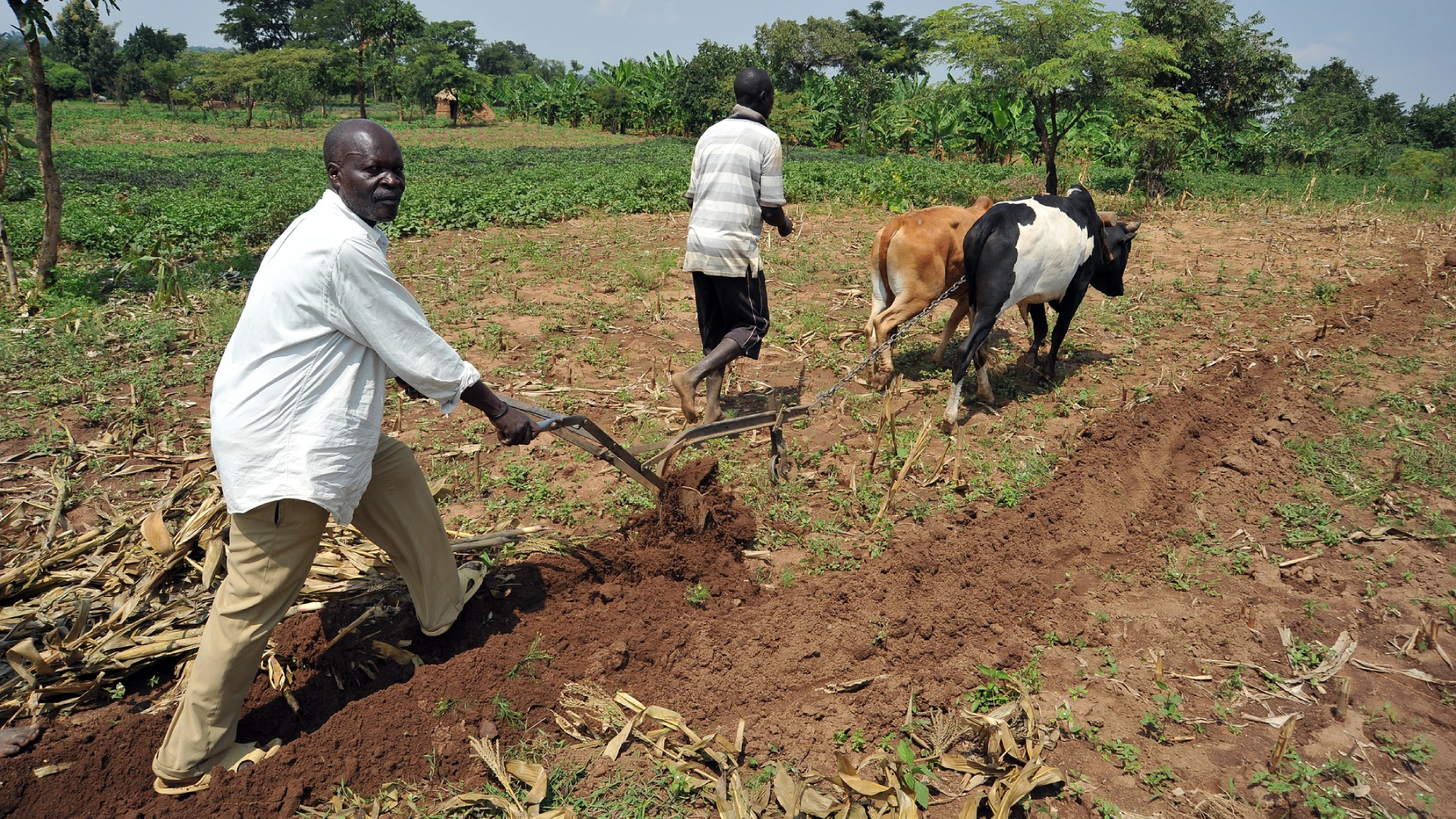
The forests in which the mountain gorillas live are already surrounded by farms and settlements but as the human population around Bwindi grows, humans are encroaching more and more into the gorillas’ territory.
Many poverty-stricken locals prioritise their immediate needs over the conservation of the forest, which is damaged and degraded when people illegally cut down trees to use as firewood or clear the land to grow food. Although these actions are driven mainly by poverty and desperation, there is no regard for the well-being of the wildlife that lives there. By working with HUGO (Human Gorilla Conflict Resolution team), and through Viva! Uganda’s community education initiatives, we aim to show the people of Bwindi that not only can they live in harmony with the wildlife around them, but they can both prosper together.
If this deforestation continues the gorillas will not have enough space to live. Because of their sheer size, gorillas need to eat a lot of plants to meet their caloric needs and stay strong. Once they’ve eaten all the plants in one area, they’ll move on to another spot to find fresh food and let the old patches regenerate. But as more and more of the surrounding land is invaded by humans, the gorillas don’t have enough space to do this and begin starving to death. So, out of desperation, they explore farmland to find food, where they could encounter human diseases and other hazards such as bush traps left out for other animals.
HUGO volunteers have been very successful in herding wandering gorillas back to the forest when they approach human settlements but this is only a viable strategy if the gorillas actually have a lush and sufficient forest to return to.
Poaching
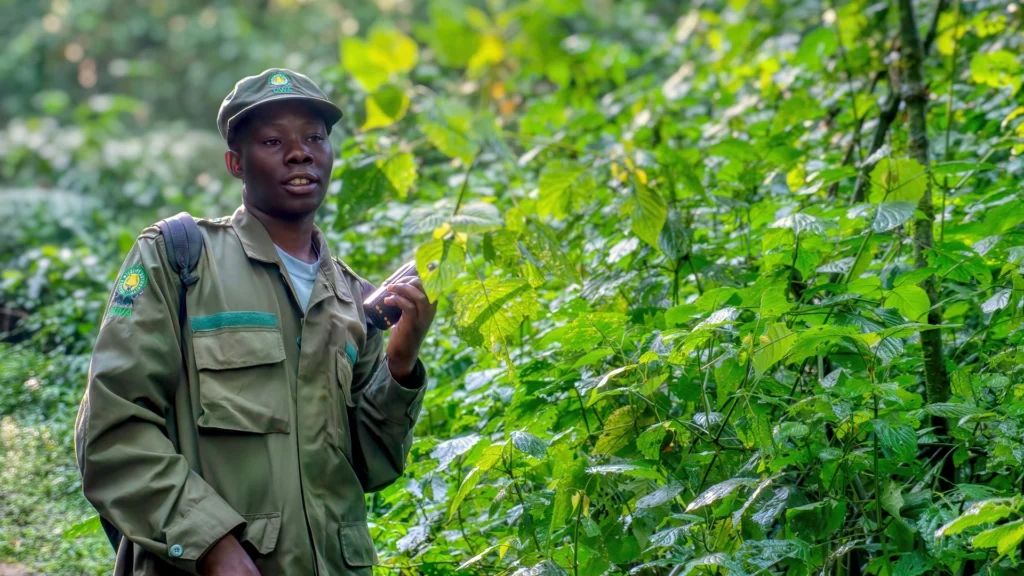
In the 20 years following the discovery of the mountain gorilla in 1902, dozens were brutally killed both by misguided scientists for research and by selfish trophy hunters. In the 1960s and 70s, poachers would make a lot of money by selling gorillas to foreigners as trophies and even captive prisoners for private collectors and zoos.9https://igcp.org/mountain-gorillas/threats/ A whole family of gorillas would have been slaughtered just so an infant could be captured for a zoo.
Poaching is rarer these days, thanks to the dedicated protection of the Rangers of Bwindi and HUGO, but still continues to threaten Uganda’s gorillas. To some people, ape meat is seen as a sign of wealth10https://www.ifaw.org/uk/animals/mountain-gorillas, so gorillas are under constant threat from poachers. In 2020, Rafiki, one of Uganda’s rare silverback mountain gorillas was killed by four poachers who snuck into Bwindi Impenetrable Forest with spears.11https://www.bbc.com/news/world-africa-53024073 The cruel killer of the 25-year-old silverback was sentenced to 11 years in prison.12https://www.nytimes.com/2020/07/30/world/europe/poacher-gorilla-rafiki-silverback-uganda-prison.html
If no one was protecting the gorillas, there is no doubt they would be poached to extinction. This is why we must protect the gorilla protectors!
However, it’s more likely that the gorillas will fall victim to illegal snares set up to catch other animals for food, such as antelopes and bush pigs. If a gorilla accidentally stumbles into a snare, they will be seriously injured or killed, often left struggling to free themselves as the snare cuts deeper into their arm or leg.9https://igcp.org/mountain-gorillas/threats/
HUGO volunteers are constantly trekking through the jungle, searching out and dismantling the snares to protect the gorillas. And even the gorillas are intelligent and determined enough not to take this lying down. In 2012, a poor infant gorilla in Rwanda was cruelly killed in a ‘rope-and-branch’ snare, after suffering from a dislocated shoulder and gangrene where the snare had cut her leg. But just a few days later, her heroic four-year-old brother and sister, Rwema and Dukore, were seen bravely dismantling snares so that their loved ones would be safe. Infant gorillas have seen so many snares injure and kill their family members that they have learnt how to destroy them.13https://www.nationalgeographic.com/animals/article/120719-young-gorillas-juvenile-traps-snares-rwanda-science-fossey This shows an overwhelming concern for their loved ones, as well as intelligence and bravery to be admired.
Disease
Because the DNA of mountain gorillas is 98.3 per cent the same as humans, illnesses can easily be passed between us and them. However, gorillas have never developed immunity to many of our ailments so a common cold might be harmless to us but could be deadly for them. If a virus was to pass through a family of gorillas, it could have devastating consequences, killing both babies and older gorillas.
Ebola haemorrhagic fever is one of the most harmful human diseases threatening the mountain gorillas. It is often fatal and has killed thousands of gorillas in the past.10https://www.ifaw.org/uk/animals/mountain-gorillas The more that humans enter the gorillas’ habitat – whether that’s looking for firewood, hunting or clearing land for crops – the more vulnerable to illness and disease the gorillas become. In addition, as the gorillas’ habitat shrinks and they venture further afield in search of food, they have a higher chance of coming into contact with humans and contracting any number of deadly diseases.
Climate change
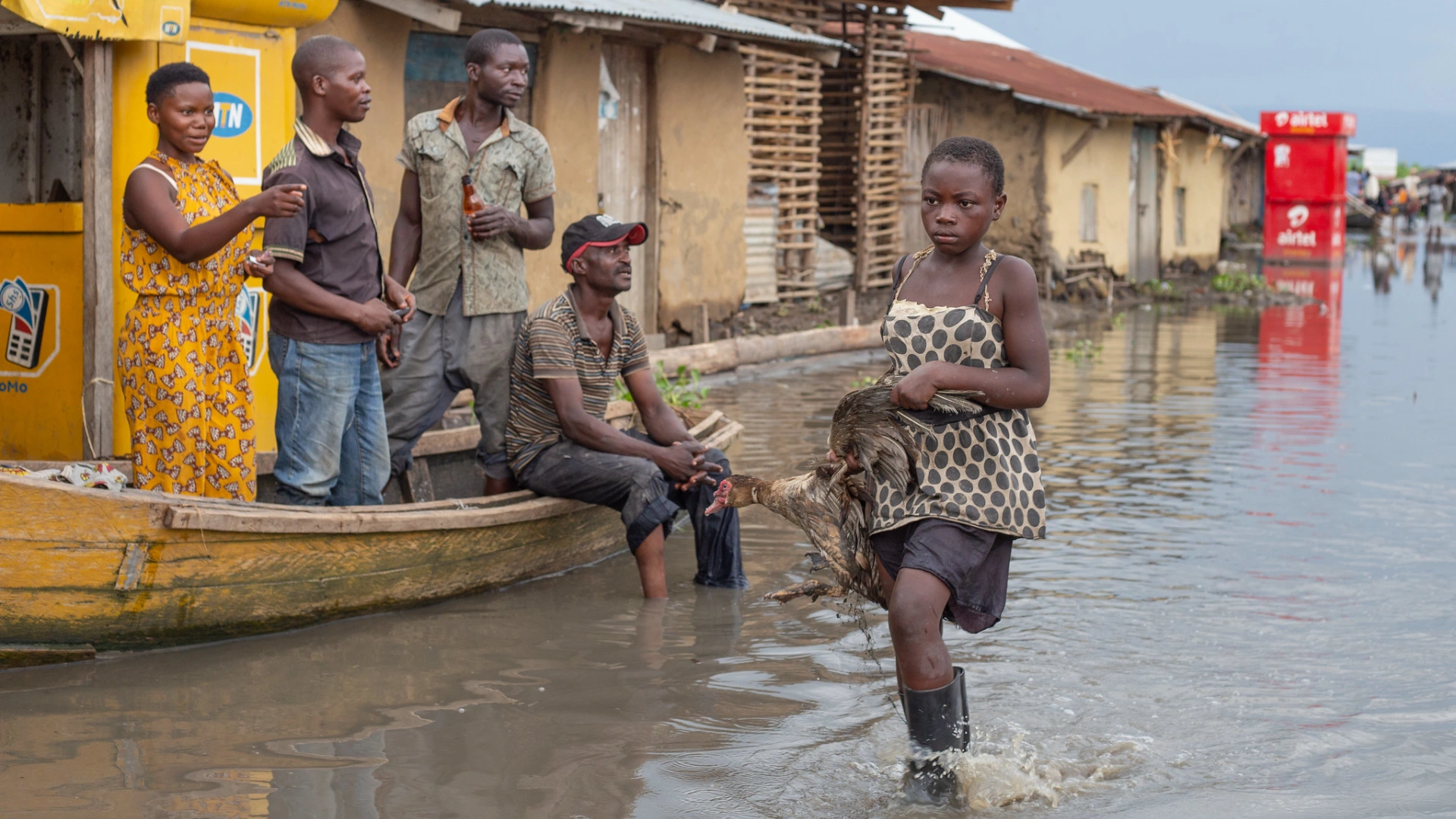
Gorillas are hardy and adaptable animals but even they can’t escape the effects of climate change. Changes in rainfall patterns and temperatures can affect the food they rely on, lead to thermal stress and make them more susceptible to illness. In times of drought, forest fires have the potential to kill the gorillas and destroy their habitat.14https://gorillafund.org/uncategorized/climate-change-mean-gorillas/
But, it’s actually the effect that climate change has on the local people that may be the largest threat to Bwindi’s mountain gorillas. For example, if droughts cause crops to fail and reduce water availability, humans will have to look to the forest for food and water. This could mean more illegal hunting of wildlife leading to injury and death for the gorillas, as well as an increased risk of humans spreading diseases to the gorillas as people encroach into the forest more regularly.15https://www.worldwildlife.org/pages/mountain-gorillas-and-climate-change
Human conflict
As if poaching, climate change and habitat loss weren’t enough, mountain gorillas have also had to contend with violent human conflicts. Most of the human conflicts affecting mountain gorillas have taken place in the Democratic Republic of Congo (DRC) and in neighbouring Rwanda.
Gorillas have been caught in the middle of fierce gunfights and been gunned down by AK-47s, and had their habitat destroyed by explosive warfare.10https://www.ifaw.org/uk/animals/mountain-gorillas Because of Uganda’s relative stability, it has the best chance of becoming a haven for mountain gorillas, if we support it and the people who protect them.
References
References
- 1
- 2
- 3
- 4
- 5
- 6
- 7
- 8
- 9
- 10
- 11
- 12
- 13
- 14
- 15

